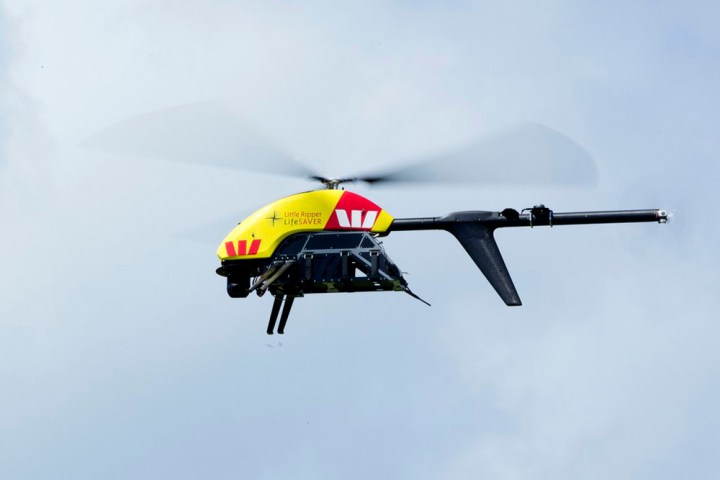
At a cost of $250,000 per unit, New South Wales’ first step in its shark strategy drone program is currently being dubbed the “Little Ripper.” Capable of maintaining sustained flight for roughly two and a half hours before requiring a charge, the Little Ripper boasts a built-in high-definition camera, which it uses to transmit beach footage to a two-person monitoring team. For instance, if the drone spots a shark or some other type of hazard, the two-person team has the ability to either drop a small payload (shark repellent, inflatable raft, etc.) to the endangered person(s) while beaming the exact GPS coordinates to a response team.
“This is innovation at its best that will lead to a safer Australia,” says investing company Westpac CEO Brian Hartzer. “For over 40 years, the Westpac Life Saver Rescue Helicopter Service has been a crucial community service in Australia, and we believe the Westpac Little Ripper Lifesaver technology has the potential to save even more lives.”
Though the two-person team essentially comprises the Little Ripper’s operating capacity, Sydney’s University of Technology is currently devising a smart software program capable of allowing the drone to recognize different species of sharks. Considering the variety of different types of sharks swimming in Australian waters, the software would be especially important in helping to identify exactly when someone might need assistance from a bull, tiger, or great white shark.
Over the next six months, Westpac and New South Wales plan to execute a trial run of the Little Ripper and — if all goes well — the drone will be sent to rescue outfits all over the country. Primarily, the Little Ripper test phase plans to focus on its capability to support the existing infrastructure of support practices in New South Wales across the slew of emergency services operations.
“The aim of this trial is to accomplish things with search and rescue that were impossible to even dream about 10 or 20 years ago,” Hartzer adds. “It offers exciting new possibilities to unite multiple emergency services in ensuring more effective and rapid deployment in critical search and rescue missions, including in the aftermath of natural disasters.”
After testing concludes, and the drone is issued to organizations across the country, New South Wales is then expected to open a drone flight academy geared towards educating volunteers on how to pilot the rescue craft. Expect an update on the progress of the Little Ripper’s experimentation period to occur sometime this summer.




